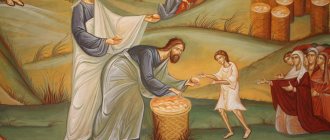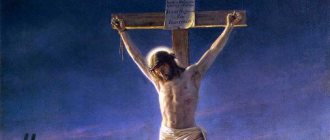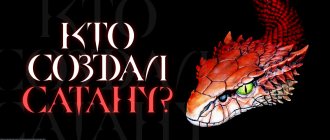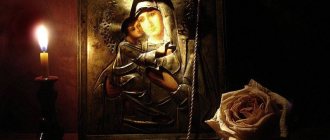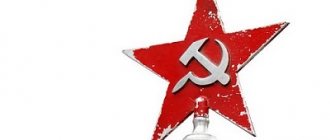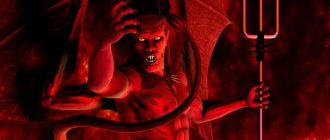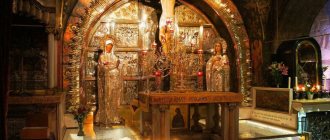The Devil's Bible is one of the most sinister books in the world. It contains not only scriptural texts, but also an alleged self-portrait of Satan. There is also information about the existence of hellish and black icons, worshiping which people pray to evil spirits. Such artifacts often terrify Christians. What are these items? Should we be afraid of such things?
Devil's Bible Information
This is a huge book, which is a manuscript. According to the hypothesis, it was discovered at the beginning of the 13th century in a monastery in the city of Podlazice, in the Czech Republic.
Legend has it that the book was created by a monk who, for a grave sin, was forced to rewrite the entire text of the Bible overnight. Realizing that he could not cope with this task on his own, the man called on the devil for help. But Satan agreed only on the condition that the monk would draw his portrait on one of the pages.
The handwriting in which the book is written is uncharacteristic of that time; the letters look like printed ones. It is noteworthy that on page 290 there is a strange picture that is probably Satan.
There is also some text. The letters are different from those used in the rest of the book. It feels like someone else created this piece.
“It’s really expensive”: Vasilisa Volodina announced the cost of an hour of her consultation
Purple hair is the dream of mysterious beauties: a selection of spectacular images
Breakfast porridge, dental floss: Changes in daily routine reduce risk of dementia
No need to look for Satan where he is not
Several years ago I already had to write on this topic. Then in Russia the Volga religious procession was held with an ark containing a particle of the relics of the Holy Great Martyr George the Victorious, which had the shape of a hand with the little finger and index finger extended forward. At the same time, some “zealots of piety” hastened to call the ark “the right hand of Satan.”
Today we saw some hint or even a direct indication of a connection with a fallen angel in the gesture of Archpriest Grigory Kryzhanovsky on the cover of the first issue of the Napravo magazine. I must admit that the move with the gesture was designed to attract the reader, it was planned to “hook.” But not only that – it should also have prompted us to figure it out.
Just as a couple of years ago, explaining the symbolism of this ark, I wrote that any symbol can only be read in its context and no other, so now I draw attention to this.
On the contexts of gesture in Orthodox iconography
Such a gesture is not uncommon for sacred images.
Christ the Merciful. Byzantine mosaic icon. 1st half 12th century
And it is connected with the ancient oratorical tradition adopted in ancient culture. While delivering a speech, the ancient Roman speaker used certain gestures. Some gestures indicated the beginning of speech, others focused attention on the most important words. This moment is also mentioned in Scripture, for example: “Then Paul stretched out his hand to answer you” (Acts: 26:1).
Apostle Paul. Fragment of a Novgorod icon of the 13th century
So, about the “goat”. According to the book “Instructions to the Orator” by the ancient Roman rhetorician Quintilian, the finger gesture, in which the two middle fingers are tucked under the thumb, and the index and little fingers are extended forward, is called the “urgent gesture.”
Many elements of ancient culture migrated to Christian art, including the culture of gestures. And the very gesture that so frightens some Orthodox Christians. In the icon, oratorical gestures symbolize the character’s direct speech and sermon.
For example, the 6th century Byzantine historian Paul the Silentiary describes the altar curtain in the Church of Hagia Sophia in Constantinople, on which was woven the image of the Savior, “stretching out the fingers of his right hand, like a prophetic verb, and in his left hand having a book that knows (contains) divine verbs "
Christ the Priest. Mosaic from Sophia of Kyiv. 11th century
It is obvious that the gesture, now called “goat”, and in ancient Rome “urgent”, in the icon means a call for attention: “look!”
A symbol can be “read” exclusively in its context and in no other way. Agree that the halo on Orthodox icons and pagan images are not the same thing. Do we need to abandon the halo, citing the pagan origin of the symbol (and it actually comes from Hellenistic images of pagan deities)?
Or, if we limit the problem only to gestures, is it necessary to abandon the various finger formations on the icon, just because we find something similar in Hinduism and Buddhism (the so-called “mudras”). Let's think about it. There is a certain symbol. In the context of one system it means: A, in the context of another: B, and in the context of a third: C. Why, if a symbol is used in one of these contexts, should we suspect the other?
Why should a gesture that has a specific meaning in the sign system of the language of the deaf and mute necessarily be suspected of Freemasonry or Satanism? In theory, the Orthodox should be closer to their native, church, and icon contexts. And if we, forgetting our own tradition, see only Masons, then perhaps there is something wrong with us.
Secrets of the sinister book
It is strange that the artifact survived into the twenty-first century. After all, the Inquisition should have destroyed it long ago. Scientists still cannot answer the question of who wrote this book. But they assume that it was beneficial to someone.
The Devil's Bible was kept in different countries. First she was in Hungary, then in Sweden. Then the book was shown in Germany and the USA. Until 2007, the artifact was kept in the Czech Republic, in the royal museum. It was then transported to the national library.
According to legend, a terrible fate awaits each owner of the book. There is a belief that to get rid of the curse, an artifact must be thrown out of the window.
Hellish icons
These items can be perceived as a mockery of religion. There is a lot of information about such artifacts in medieval sources.
Hellish icons are images in which another picture is hidden under one picture. The first one contains evil spirits. When the paint dried, the faces of saints and Christ were superimposed on the images of hellish creatures. The first time such icons are mentioned is in the Life of St. Basil. According to legend, the saint approached the walls of the city, on which the icon of the Mother of God could be seen. People prayed to the face and considered it miraculous. And Vasily threw a stone at the icon. People were amazed at this behavior. But the saint explained that dark forces were hiding in the icon. When the paint was removed from the image, it turned out that there really was a devil drawn there.
How to quickly and easily remove stains from jeans from upholstery: simple instructions
We remove all things from the car: safe methods of parking with protection against burglary
How to achieve a natural result when highlighting your hair: 5 best ways
According to legend, hellish icons were used by sorcerers to punish deeply religious people. Having thrown such an object to a Christian, the magician forced him to pray not to God, but to the devil.
According to another version, heretics were involved in the creation of these icons. Some of them did not accept the church reforms that appeared in the 17th century. And with the help of such images they frightened believers who approved of the changes in the rules. Others were against violating the commandment “Thou shalt not make thyself an idol.” By creating such images, heretics expressed their protest.
A little history
The hellish icon was first mentioned in the “Life” of St. Basil, dating back to the 16th century. It describes an episode when a revered holy fool, in front of the shocked crowd, threw a stone at the considered miraculous icon of the Mother of God, which was located on the Barbarian Gate. Under a layer of paint chipped off by a stone, an image of a devil was discovered. According to historian B.A. Uspensky, this episode clearly demonstrated the people’s understanding that both images - the obvious and the hidden - are inextricably linked and that the hidden, lower, influences the obvious, upper.
The term “adopisic (adoptioned) icons” itself was used mainly by Old Believers. In the second half of the 19th century, publications about hell-painted icons appeared in newspapers and literary works, but they only deal with fairly late icons, the writing on which looks cheap and unskillful. They are mentioned in the story “The Sealed Angel” by the writer N.S. Leskov, who paid great attention to the spiritual and Christian life of Russia and was keenly interested in icon painting. However, no artifacts, that is, material evidence of them, were ever found, and the presence of a lower primed layer on some icons could be explained by the fact that the “bogomaz” simply ruined the image, and he had to prime it and paint it all over again. In any case, there is no evidence that during the restoration of ancient icons any ungodly image was discovered under the top layer.
Black icons
These images are of a slightly different nature. On hellish icons, the devil and dark forces are hidden under a layer of paint. On black they are shown openly.
The saint's face is distorted. Horns or hooves are added to the image.
Often black icons parody biblical scenes, for example, the Mother of God and the Child, the Trinity.
You can also have sweets: a nutritionist said that it’s not harmful to eat sweets in the morning
NASA has come up with “eternal” tires for bicycles. They do not need to be inflated with air.
Experts say that by 2035 humanity will switch to artificial meat.
Such items are often used by sorcerers.
Who needs it and why?
The phenomenon of hellish icons was discussed in the 19th century press mainly in the context of the favorite “conspiracy theory”. Since the tsarist government treated dissent and any religion other than official Orthodoxy extremely unfavorably, and apostasy was considered a serious criminal offense, rumors about all sorts of mythical machinations of infidels and heretics were very popular and often led to real tragedies. A striking example of this is the so-called “blood libel” against Jews accused of allegedly committing ritual murders of Christian children, for which the former were repeatedly subjected to brutal pogroms. A similar situation developed around hellish icons. Old Believers were accused of creating such hidden images, allegedly fighting in this way against the images of the Western “Fryazhsky letter”, or representatives of the Judaizing sect, who opposed the worship of icons as such.
Is the fear of believers justified?
Should we be afraid of hellish and black icons? Some Christians are worried that there may be such an object in the church, disguised as a miraculous image.
If we recall the case of St. Basil, through this righteous man God revealed the secret of the hellish icon. If such a need arose in the modern world, the Lord would do the same with the help of some godly person. Therefore, there is no need to be afraid.
In addition, researchers consider legends and traditions about black icons only myths that are not supported by real facts.
Found a violation? Report content
Fraud or harmless prank
The writer Nikolai Leskov, who himself was once fond of icon painting, saw completely different motives in creating such images. In the story “The Sealed Angel,” his character acquires an icon from an unscrupulous traveling merchant, which turns out to be hellish. Another merchant exposes the forgery to the unfortunate buyer: “... he scratched it with his fingernail, and from the corner a layer of the letter jumped off, and under it a devil with a tail was drawn on the ground! He knocked off the letter in another place, and there was another little devil underneath.” However, it immediately became clear that it was not out of good intentions that the second merchant exposed the deception, but only in order to receive the order himself and profit. “And I already saw clearly that they were one gang and were trying to treat me badly, not in honor, and, having left them the icon, I left them with eyes full of tears...”, Leskov’s hero concludes the story.
Maxim Gorky’s own example makes us wonder whether the legendary hellish icons could have been the result of an icon painter’s usual prank. Recalling the period when he himself, as a child, worked in an icon-painting workshop, Gorky, in a conversation with memoirist Ilya Surguchev, admitted that he received the nickname “little devil” there, because from a lack of faith he tried to incite his fellow workers to draw horns on the saints. When he left the workshop, one of his friends made an icon especially for him with the image of a ruddy devil with horns, which Gorky, according to Surguchev, kept with himself all his life as a memory.

